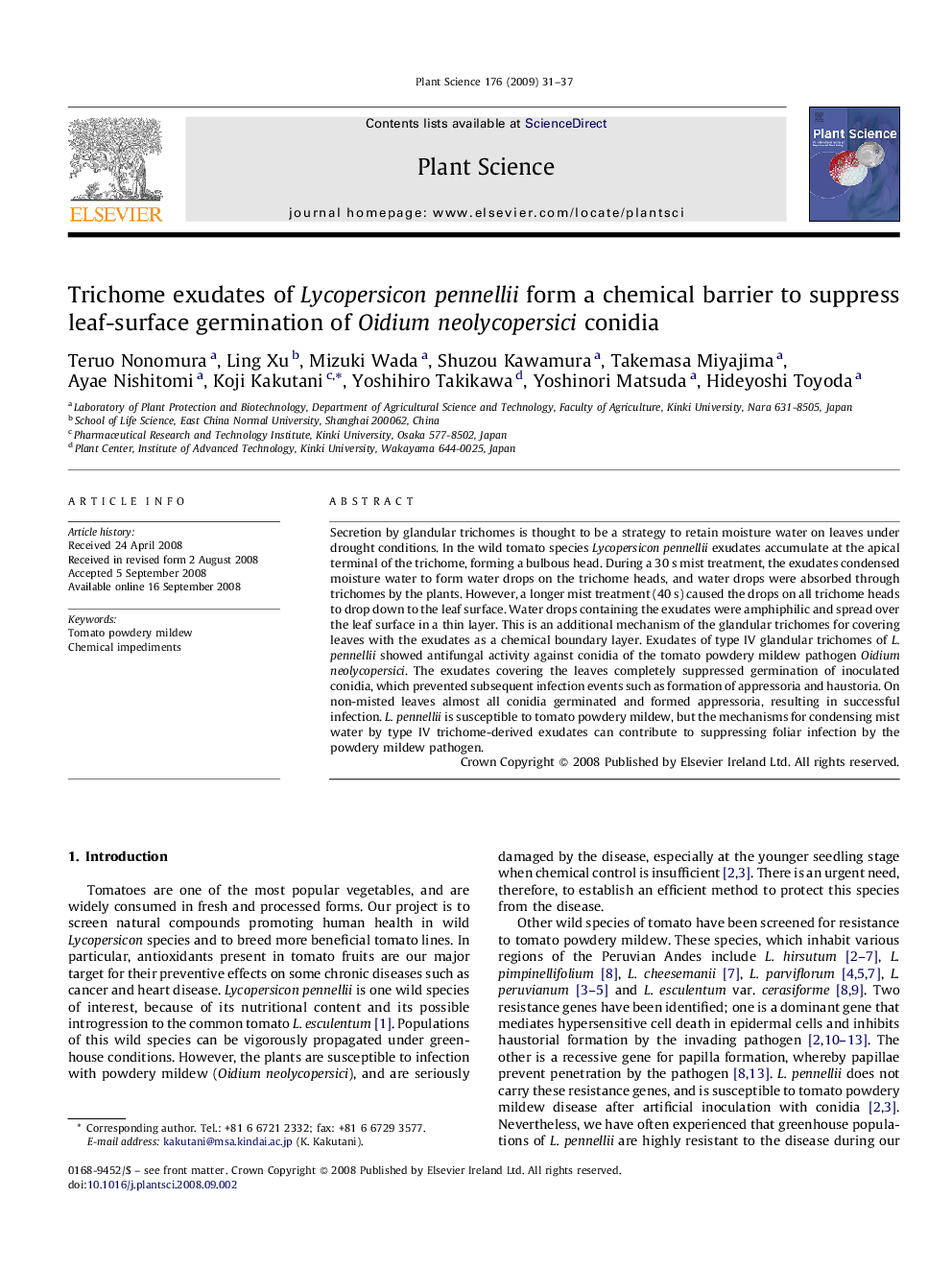| Article ID | Journal | Published Year | Pages | File Type |
|---|---|---|---|---|
| 2018029 | Plant Science | 2009 | 7 Pages |
Secretion by glandular trichomes is thought to be a strategy to retain moisture water on leaves under drought conditions. In the wild tomato species Lycopersicon pennellii exudates accumulate at the apical terminal of the trichome, forming a bulbous head. During a 30 s mist treatment, the exudates condensed moisture water to form water drops on the trichome heads, and water drops were absorbed through trichomes by the plants. However, a longer mist treatment (40 s) caused the drops on all trichome heads to drop down to the leaf surface. Water drops containing the exudates were amphiphilic and spread over the leaf surface in a thin layer. This is an additional mechanism of the glandular trichomes for covering leaves with the exudates as a chemical boundary layer. Exudates of type IV glandular trichomes of L. pennellii showed antifungal activity against conidia of the tomato powdery mildew pathogen Oidium neolycopersici. The exudates covering the leaves completely suppressed germination of inoculated conidia, which prevented subsequent infection events such as formation of appressoria and haustoria. On non-misted leaves almost all conidia germinated and formed appressoria, resulting in successful infection. L. pennellii is susceptible to tomato powdery mildew, but the mechanisms for condensing mist water by type IV trichome-derived exudates can contribute to suppressing foliar infection by the powdery mildew pathogen.
